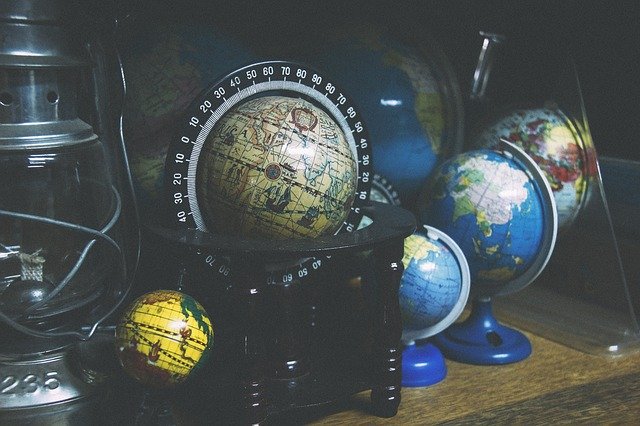
A globe, more accurately terrestrial globe or geographical globe, is a three-dimensional scale model of Earth. Traditionally, globes were made from printed paper map glued onto a wooden sphere. Today, globes are usually made from two pieces of printed thermoplastic which are heated using hemispherical molds. The two hemispheres are then joined to form a complete globe.
Globes come in a variety sizes and forms as well as in materials used. There are antique globes that are made from precious metals, crystal, glass marble and ornate wood. Modern globes are usually made from materials that are both strong and lightweight such as cardboard, plastic, and metal. Globes are usually mounted on a stand at a 23.5° angle on a meridian, represents the angle of the planet in relation to its sun and the spin of the planet. This makes it easy to visualize how days and seasons change.
When shipping, globes must be properly packed to protect them during transit. Whether shipping valuable antiques or ordinary run of the mill globes, the item must be well padded and protected from damage due to impact and rough handling. Here are tips on how to properly pack and ship a globe.
Because of its unusual shape, a globe is best boxed for shipping. Wrap the entire globe in several layers of bubble wrap and secure with tape. Make sure that all parts are covered and the globe is not turning.
Line the bottom of an appropriately sized box with packing materials. The box should be large enough to accommodate the globe and provide at least two inches of extra space on all sides. Place the globe inside and fill the sides and top of the box with more packing materials until the item is unable to move or shift.
Close and seal the package with heavy duty packing tape. Address and label the box and bring to your local post office or shipping company.
